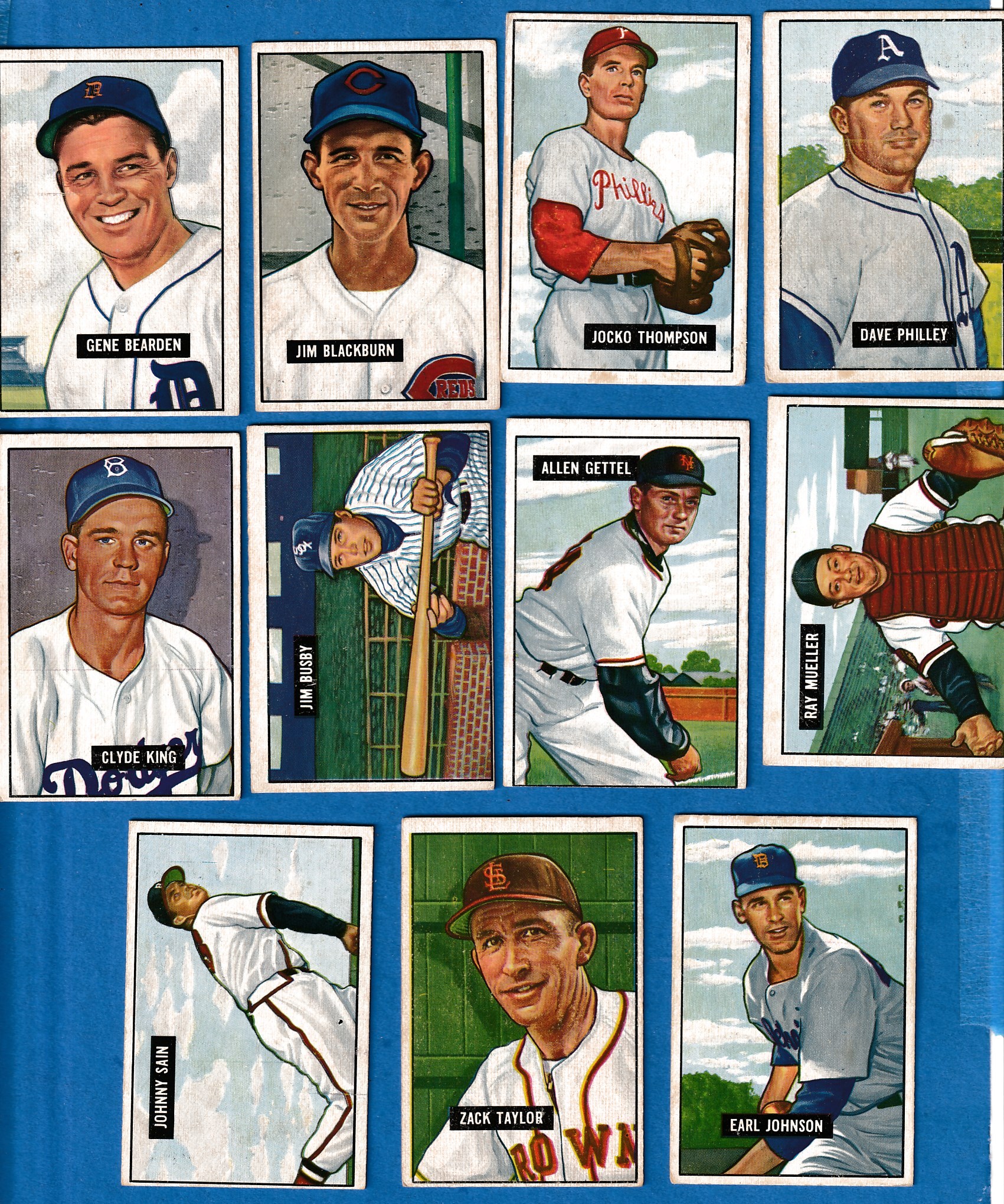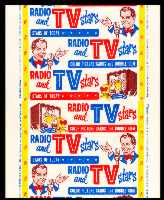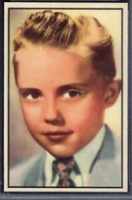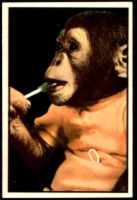1951 Bowman #313 Ray Mueller SCARCE HIGH# (Boston Braves)
| Book Value |
$ 50 |
| Our Price |
n/a
Out of stock
|


Below are short bits & pieces on sportscard & baseball trading card collecting.
Please wander around the website for more info, prices, values & images
on vintage baseball, football, basketball, hockey, sport and non-sports cards.


1952/1953 Bowman
TV/Radio Stars of NBC
(R701-14 and R701-15)
1952 and 1953 Bowman "TV & Radio Stars of NBC" card sets captured the
culture of the early television/radio era, featuring NBC's most popular
and entertaining names of the day. The cards were a slightly taller 2.5 x 3.75 inches.
1952 card backs were horizontal while the 1953 backs were vertical.
After the success of their 1952 set, Bowman released a much larger 1953 set
with including more TV stars like Bob Hope, Groucho Marx, Sid Casear, Dinah
Shore and others. The set also included a card for a child actor Ronnie Walken.
You may know it better as Christopher Walken's ROOKIE card !!!
 Another popular card is chimpanzee J. Fred Muggs ROOKIE card.
Another popular card is chimpanzee J. Fred Muggs ROOKIE card.
The Today Show started in 1952 and when it was under-performing, they brought in J. Fred Muggs
as a co-host. Jim Fleming, the newsreader for the show, quit in protest.
Muggs the chimp was quite worldly and knew over 500 words and had a wardrobe of 450 outfits.
Producer, Richard Pinkham, once estimated Muggs brought his network $100 million.
Muggs was also an artist and in 1958 one of his finger paintings became the cover of Mad Magazine #38.
Note: You may be on that page right now.
|

1952 Topps Baseball Cards
Checklist & Values
1952 is often thought of as Topps 1st baseball card set, but it was not.
Topps issued several smaller baseball card sets prior to their huge 1952 set.
The buzz word at Topps back then was "BIGGER is BETTER" for their 1952 Topps set
which Topps described as: "GIANT IN BOTH SIZE and NUMBER of CARDS" (407).
Key card in the 1952 Topps set is #311 MICKEY MANTLE.
Often called Mickey Mantle's Rookie card - BUT IT IS NOT. That honor
goes to his 1951 Bowman.
1952 Topps "High Numbers" (#311-#407), are very, very scarce with an
interesting story:
This HUGE set was released in series, released weeks apart. By the last
series, baseball was over and football starting.
??? Perhaps the set was too huge ???
Shops had cards left from earlier in the year so many orders
were cancelled, thus the scarcity.
Adding interest is how Topps got rid of the now useless cards, including
THOUSANDS of MICKEY MANTLE's. They dumped them into the Ocean !!!
|

History Of O-Pee-Chee
O-Pee-Chee (OPC) based in Ontario Canada, is mostly thought of as the
Canadian version of Topps but it actually pre-dates Topps by many years.
In 1933, OPC issued their first sports card set, the V304 Hockey cards and
is currently in the tens of thousands. Their first baseball set was
issued in 1937. It was similar to the 1934 Goudeys and Batter-Ups
and the top player was Joe Dimaggio.
O-Pee-Chee created baseball card sets similar to TOpps from 1965 into the
1990's. At first OPC sets were much smaller than Topps
and included just the first few series. Fronts & backs were nearly identical
but with a small "Printed in Canada" on the back and the card stock was
slightly different.
Baseball being much less popular in Canada, OPC print runs of their early
years were between 1% and 10% of Topps making them exceedingly scarce !!!
Starting in 1970, Canadian legislation demanded all items produced in Canada
carry both French & English so OPC baseball cards became bilingual with both
languages included.
Other OPC differences include:
1971, OPC even changed the back design to a much more
interesting back and also offered 14 different card photos not in the Topps set.
1972 OPC included a card of Gil Hodges mentioning his death that was
not a part of the Topps set.
1974 OPC did not include any "Washington Nationals" variations.
1977 the card format remained like Topps but almost 1/3 of the OPC set had
different poses/images than Topps.
In late 1970's, OPC card fronts appeared similar to Topps but sometimes
included traded information saying "Now with XXXX". They were able to do
this as the OPC cards were printed much later into the season.






 Another popular card is chimpanzee J. Fred Muggs ROOKIE card.
Another popular card is chimpanzee J. Fred Muggs ROOKIE card. 